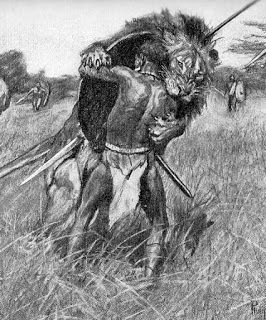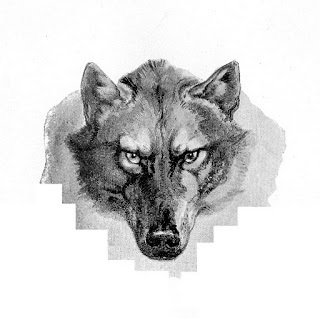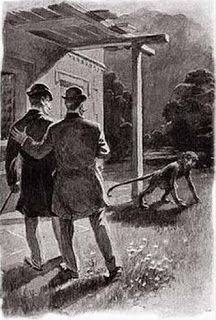Literature on the Wild Side
Literature takes a walk on the wild side when people clash with carnivores on the frontiers of Africa, Asia, and America. Our interactions with dangerous animals cast surprising light on race, gender, ecology, and even religion. These talks will touch on classic works of fiction by writers like Rudyard Kipling and Arthur Conan Doyle and vintage nonfiction by adventurers like Jim Corbett. For the first time, my lectures for the Selim Center will be available online.
Session 1 (September 22): The Man-Eaters of Tsavo

Two young lions brought British commerce to a halt, inspired books and movies—and set science on the wrong course for a hundred years. Twenty-first century biology sheds new light on this classic true tale from Victorian literature.
Optional Readings:
John Henry Patterson. “The Saga of the Man-Eaters.” This abridgment of Patterson’s book covers only the story of the man-eating lions.
Or, read his entire book.
Session 2 (September 29): Man into Wolf

Stories about wolves and other carnivores are almost always about something else—crime, war, or even the dark side of human nature. Classic writers like Rudyard Kipling and Robert Louis Stevenson show us why.
Optional Readings:
Jim Corbett-The Man-Eating Leopard of Rudraprayag
Rudyard Kipling. “The Mark of the Beast.”
Robert Louis Stevenson. “Olalla.”
Robert Louis Stevenson. The Strange Case of Dr. Jekyll and Mr. Hyde.
Session 3 (October 6): Sherlock Holmes Meets the Beasts

When Edgar Allan Poe invented the literary detective, he also invented its doppelganger—the motiveless malice of the animal. Arthur Conan Doyle refined both tropes in his finest tales.
Optional Readings:
Edgar Allan Poe. “The Murders in the Rue Morgue.”
Arthur Conan Doyle. “The Adventure of the Speckled Band.”
Arthur Conan Doyle. "The King of the Foxes."
Arthur Conan Doyle. “The Terror of Blue John Gap.”




